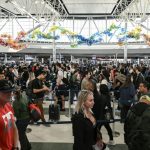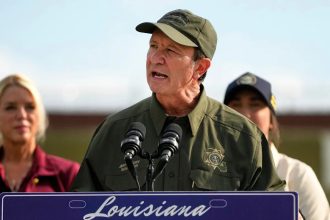NEED TO KNOW
-
At least two people have died and millions of others have evacuated as Super Typhoon Fung-wong makes landfall in the Philippines
-
One villager drowned in flash floods, authorities stated, while another died after being pinned down by debris from a collapsed home
-
The storm comes as the nation is recovering from Typhoon Kalmaegi, which left at least 224 people dead in the Philippines and five in Vietnam
At least two people have died and millions of others have evacuated as Super Typhoon Fung-wong ravages the Philippines.
While the typhoon — known locally as Uwan — is the 21st storm to hit the Southeast Asian archipelago this year, it is by far the biggest with an approximately 994-mile wide rain and wind band that could cover two-thirds of the nation, according to The Independent.
As the violent storm threatens the country’s northeastern coast, millions of people have evacuated from villages at risk of flash floods, landslides, and tidal surges.
“We ask that people preemptively evacuate so that we don’t end up having to conduct rescues at the last minute, which could put the lives of police, soldiers, firefighters and coast guard personnel at risk,” Defense Secretary Gilberto Teodoro said in a public address, per Reuters.
Daniel Ceng/Anadolu via Getty
Typhoon Fung-Wong
One villager has drowned in flash floods in the eastern province of Catanduanes, officials confirmed to the Associated Press, while another died in Catbalogan city in eastern Samar province after being pinned by debris from a collapsed home.
According to authorities, the typhoon has already had devastating impacts on many parts of Luzon — the Philippines’ most populous island — sustaining winds of 185 kph (115 mph) and gusts of up to 230 kph (143 mph).
Philippine President Ferdinand Marcos Jr. has declared a state of emergency as the nation continues to recover from Typhoon Kalmaegi, which left at least 224 people dead in the central island provinces and five in Vietnam.
The military has also redirected around 2,000 troops from field training to aid with humanitarian assistance and disaster response, according to Reuters.

Philippine Coast Guard via AP
People evacuating in Sablayan, Philippines
Christopher Sanchez was one of the many individuals seeking shelter in a basketball court repurposed as an evacuation center as the typhoon neared their home. “We heard on the news that the typhoon is very strong, so we evacuated early,” Sanchez, 50, told Reuters. “We left our things on the roofs of our house, since every time there’s a storm, we come here because we live right next to the river.”
“We’re scared,” he added. “We’re here with our grandchildren and our kids. The whole family is in the evacuation area.”

Daniel Ceng/Anadolu via Getty
Aftermath of typhoon Kalmaegi in the Philippines
Robert Monterola, a disaster-mitigation officer for Caranduanes, told the Associated Press that others neglected to evacuate until conditions became incredibly dangerous.
“The rain and wind were so strong there was nearly zero visibility,” Monterola told the outlet. “Our personnel rescued 14 people who were trapped on the roof of a house engulfed in flood in a low-lying neighborhood. A father also called in panic, saying the roof of his house was about to be ripped off by the wind. We saved him and four relatives.”
Read the original article on People









